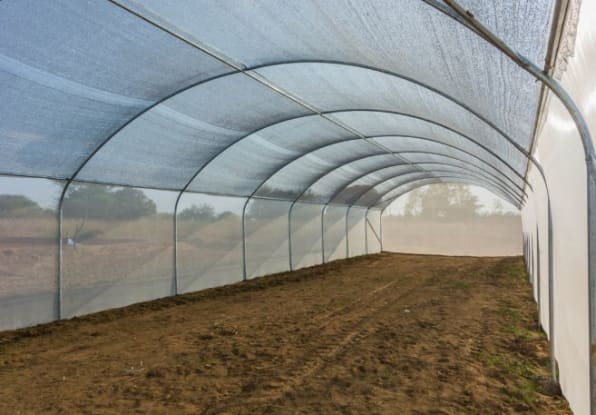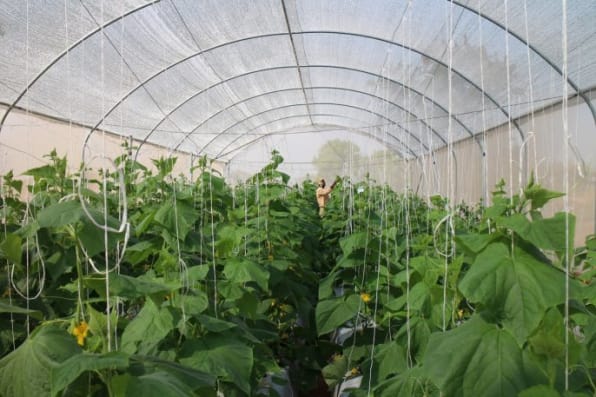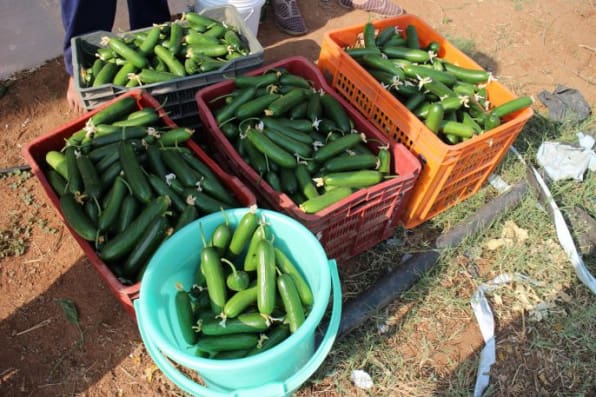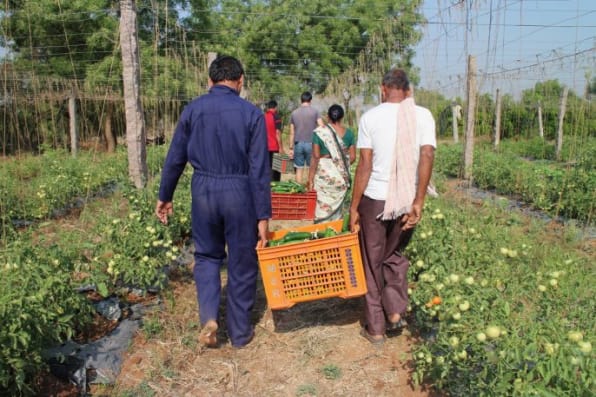This Low-Cost Greenhouse Is Designed To Help The Poorest Farmers
For a small farmer in India, the last year might have gone something like this: She plants tomatoes, and the crop is destroyed by pests. Months of extreme heat mean that she can’t plant anything else. When she finally plants another crop, it’s destroyed by drought. After backbreaking labor, she’s still broke, or worse, in serious debt. In 2015, more than 8,000 farmers in India committed suicide, most because of their financial situation.
As climate change increases environmental risks for farmers in the area–from monsoons to heat waves–one startup is testing a potential solution. Kheyti, which recently won the Global Social Venture Competition, makes what it calls the Greenhouse in a Box, a simple, low-cost greenhouse that can sit on a small area of a farm and provide regular crops which guarantees year-round income if everything else goes wrong.

“The biggest problem that we found is income variability,” says co-founder Kaushik Kappagantulu. “Farmers make money only once or twice in a year. That income is affected by all sorts of environmental risks, including unseasonable rain, pest attacks . . . That’s why they’re stuck in that poverty cycle.”
The typical greenhouse available in India was originally designed for farmers in developed countries who grow high-value flowers or vegetables–and it’s well out of the price range of a low-income farmer. The new greenhouse is simpler, with fewer materials and a smaller footprint (it’s roughly half the size of a basketball court or 2% of the land area of a typical small farm in India). Two layers of shade netting on the top reduce the temperature inside by 5-8 degrees Celsius. Insect netting on all sides reduces pest attacks 90%.

The team is now working with Extreme, a course at Stanford University’s d.school that focuses on design for extreme affordability, to bring the cost down further. The current version of the greenhouse costs $ 2,000 to make, and through a partnership with a bank, the startup is offering it to pilot customers at cost, with a $ 400 down payment and quarterly payments of $ 175 over three years. A high-quality cow, by comparison, costs around $ 800.
“It’s basically the same investment that a farmer would make to start a daily operation, buy two or three cows so they can make a steady income from dairy, or invest in making a small poultry shed in their farms for chickens and eggs,” Kappagantulu says. “I think it’s comparable to other small investments that farmers make.”

On average, farmers should make $ 475 a quarter from the greenhouse, leaving them a profit of $ 300 per quarter.
Still, the $ 400 down payment is more than the poorest farmers can afford. The startup is aiming to be able to offer it for a down payment of $ 100 or $ 200.
In experiments on the startup’s own farm, the greenhouse has performed even as the same crops fail outside. “Right now the temperature in Hyderabad is about 115 degrees Fahrenheit, I would say, and in this time, nothing grows,” says Kappagantulu. “From this time until about June, farmers aren’t able to grow anything outside. When we did this experiment side by side, all the plants [outside] died when the temperature hit 115, and all the plants inside survived and gave us a steady income.”
A drip irrigation system, coupled with the shade that reduces heat and evaporation, helps cut water use 90%. Along with the greenhouse’s ability to protect crops from pests and floods, this means that farmers can grow seven times more produce. But the startup believes that the greenhouse on its own can’t fully address the challenges that farmers face, so it also provides a suite of services.
“If we give them a greenhouse and they don’t have access to the right seeds and fertilizers to be used inside, the crop fails and they’re back in the same cycle,” Kappagantulu says. “If we don’t give them the right training needed to manage any diseases or growing practices that need to be done inside, again, the crop fails. If they can’t get access to the financing to buy the greenhouse in the first place, not enough small farmers are going to buy it.”

With the small group of farmers currently testing the greenhouse, the startup’s field officers regularly visit the farms, providing connections to financing, the best supplies, the best place to sell products in the market, and ongoing training. The company is working on an app that may be able to automatically assist a larger group of farmers.
Over the next year, Kheyti plans to continue testing the system with around 300 farmers, gathering data about yields and how much money farmers have to repay their loans. In theory, a farmer should be able to earn $ 100 a month when the loan is paid off, a 100% increase in average income. In 2018, the company plans to quickly scale up. Because of word of mouth, it already has a list of 3,000 interested farmers. By 2025, it hopes to reach 1 million.
(147)














